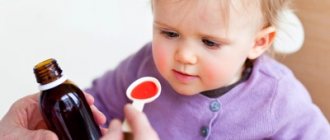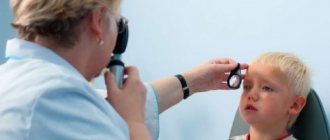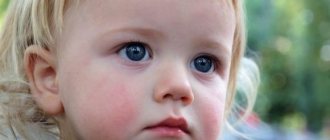Features of a baby's nose
While the baby is in the womb, he does not breathe through his nose. Only after birth does the baby begin to use the nasal passages for breathing. The nasal mucosa during this period is loose and abundantly supplied with blood vessels. Therefore, with any inflammation, it quickly becomes swollen.
The nasal passages are narrow compared to those of an adult, which causes breathing problems during a runny nose. In addition, they are short and located close to the ear canals. Therefore, children in the first year of life often suffer from otitis after a runny nose. The nasal passages are formed in a child only by the age of 4-5 years. Due to the short passages in the nose, mucus stagnates and crusts appear, which make breathing through the nose even more difficult.
Physiological runny nose in infants
As you know, a runny nose in adults occurs as a result of various diseases. But a child’s body is structured differently, and a runny nose is associated with the physiological characteristics of the child. A physiological runny nose lasts for an infant on average up to 2-3 months. And parents should know that such a runny nose does not always indicate pathology, but is only an adjustment of the nasal passages after a long stay in the womb.
Closer to 10 weeks, the nasal mucosa begins to adapt to the external environment; little mucus is produced, so dry crusts often form. After this, there is a trial version of large mucus production, during this period liquid snot is released from the nose. They do not affect the general condition of the baby, his sleep and sucking. You should not treat a physiological runny nose at this time, otherwise you can disrupt the natural process in the child’s nasal passages.
The only correct actions on the part of parents should be the following measures:
- Humidify the air in the room where the child is.
- Airing the room.
- Frequent walks in the fresh air.
Runny nose during teething
During the period when the baby's upper teeth begin to erupt, snot may appear, which does not in any way affect the overall well-being of the baby. This is due to irritation of the nerve branches that pass into the jaw area, connecting the wings of the nose and the area of the teeth. The tissues located near the erupting tooth are irritated, and at the same time the nerve going to the nasal part is also irritated. On the same side, water may appear from 1 nostril. This condition is considered normal, doctors even have their own slang about this - dental snot. But if, during the period of teething, it became difficult for the child to suck because of a runny nose, his sleep worsened, the baby became whiny, and the body temperature rose above normal, then the cause of such a runny nose is some kind of disease.
If a child has snot, what should we do at 9 months?
Medicine also knows of such cases when the cause of a runny nose was foreign objects that accidentally ended up in one of the child’s nasal sinuses. In this case, rhinitis goes away almost immediately after removing the object from the baby’s nostril.
In this case, to eliminate a runny nose, care must be taken to remove the viral infection from the body. As a rule, in particularly difficult cases, doctors prescribe antibiotics to the patient. However, in order to make breathing easier for the baby, it is also recommended to use baby nasal drops based on natural essential oils. An integrated approach to the problem will help you get rid of the disease and its unpleasant symptoms very quickly.
A child has a stream of snot, what to do if the cause of a runny nose is an allergy? In this situation, you must immediately contact a medical institution to determine the cause of the allergy. It is possible to establish the root cause of this phenomenon and eliminate its consequences, in this case allergic rhinitis, only after conducting a range of laboratory tests.
Yes, what do they call them, these drops. with silver. which ones are made at the pharmacy? ugh you
We have one branded product that helps very well. Take 20-30 grams of vegetable oil, add 3-4 drops of sage essential oil. Stir well. We heat the container (you can use a regular vodka glass) in a cup of hot water to 37 degrees. Place 3-4 drops of the resulting warm oil into each nostril every hour.
In general, sage essential oil is a powerful antiseptic and cleanser for the upper respiratory tract. This method is very helpful in fighting a runny nose: apply 2-3 drops of sage oil to a damp diaper and place it on the radiator. As the fabric dries, you need to change it.
Regarding washing: this is stress for the child, and not always justified. The fact is that not everyone knows the correct washing technique. If washed incorrectly, water (sorry, already with snot) can linger in those cavities where it should not be. This only makes the situation worse. Droplets like aquamaris, and no sprays with fancy attachments.
Even at any stage of a runny nose, it would be good to drop some warm Otipax into the ears at night (it’s better when the child falls asleep to lie on each side for a little while) and cover it with small cotton wool.
Mommy will only be happy when her baby is completely healthy and radiates only joy around him. But little children are more susceptible to various diseases than others, infections most often “stick” to them, and then mothers begin to have sleepless nights, headaches and thousands of tips on how to help the child. A runny nose in an infant is also not uncommon, but this illness needs to be treated somewhat differently than in older children, since infants require a special approach and caution.
Every parent should be aware of the phenomenon of physiological runny nose in an infant, which often appears before the age of 2.5 months. This runny nose is not infectious; it is considered an absolutely normal phenomenon, which is caused by the start of the baby’s mucous membrane. The body, as it were, specifically tests the “wet in the nose” condition, and when they begin to treat it externally with various methods, the body thinks that the “test” has failed, and after a while it carries out it again. Thus, a runny nose appears with enviable frequency without any particular reason.
It is not worth treating a runny nose in a baby who is not yet 2.5 months old unless there are compelling reasons (he has not been in contact with people who carry the infection and has not caught a cold).
Now let's talk about what can cause a real runny nose, accompanied by a high temperature in a child, excessive lethargy, or, conversely, liveliness.
• Viruses (flu, ARVI). • Cold air. • Allergens (wool, animal fluff, dust, pollen). • Foreign body in the nose (balls, beads). • Hypothermia of the baby's body, especially the feet. • Injuries to the nasal mucosa. • Exposure to harmful factors (smoke, dust, strong smelling substances).
Even if your baby has caught some kind of infection and his nose is running heavily, he needs to be shown to a doctor as soon as possible, and before that, make the first attempts at help that will ease the baby’s runny nose, and he will at least sleep more peacefully.
If the baby has an acute runny nose, but his general condition is quite stable and satisfactory, then it does not require serious intensive treatment. The only thing a mother can do is regularly wet clean the room to humidify the air, and also ventilate the room for a few minutes every hour.
How to treat a runny nose in an infant if frequent heavy nasal discharge is also accompanied by a high fever? First of all, the child needs a constant supply of water, that is, quite often the child needs to be given boiled water at room temperature (at least a few drops). If a child does not want to eat, there is no need to force him at these moments. Be sure to remove any accumulated mucus from your nose.
To cure a runny nose in an infant, you must first of all find out its cause, and only a pediatrician is competent in this matter. At this time, a mother can only ease the lot of her child and help him breathe. Vasoconstrictor drugs are used not only for adults, but also for children, including infants, only the dosage varies significantly. The best option for infants would be nasal drops. Chemicals cannot be used for more than 5-7 days! Try not to buy drops yourself, because each baby may have their own reaction - consult your doctor and only then go to the pharmacy.
A runny nose is a symptom of infection
At seven months, the appearance of rhinitis in a child may indicate an infection - viral or bacterial. How to cure a runny nose in this case? In this case, the pediatrician, after a diagnostic examination, prescribes antiviral drugs or antibiotics. Vasoconstrictor drops, saline solutions or preparations based on sea water are used locally.
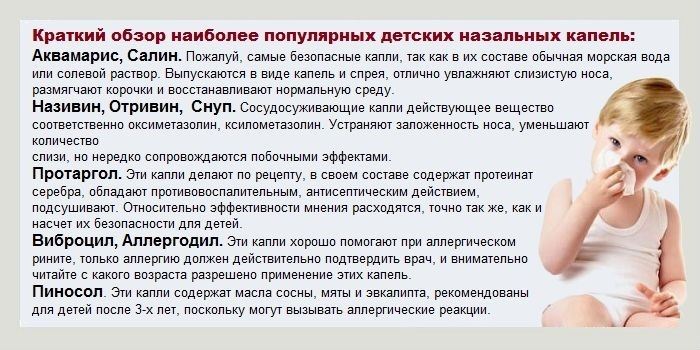
An infectious runny nose in an infant can be of the following nature:
- The viral nature of the appearance of a runny nose. In this case, nasal discharge is abundant and clear. If body temperature rises, it does not exceed 38°.
- Microbial infection. The runny nose is long lasting. A week after infection, the discharge from the nose becomes green, the mucus becomes thick, and the body temperature sometimes exceeds 38°. The child has poor appetite and sleep suffers. All of these symptoms indicate a bacterial infection.
- Allergic cause. Snot resembles viral rhinitis. But allergic rhinitis is accompanied by sneezing and lacrimation. Children often suffer from diathesis and other skin rashes that are accompanied by itching.
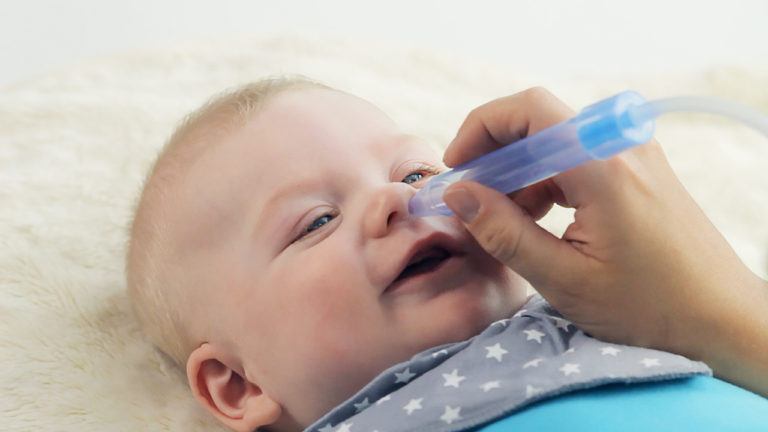
General recommendations for the treatment of runny nose in infants
A runny nose in children 7 months and older is most often associated with illness. In this case, therapy for the underlying disease should be prescribed.
How to treat a runny nose in a 7 month old baby? In this case, the following treatment measures are taken:
- It is advisable not to increase the air temperature in the room where the baby is, the optimal value is +18°C. If the air is cool and humidified, the nasal mucosa will not dry out. In cases where it is not possible to purchase an air humidifier, you can use regular water containers or install an aquarium.
- If mucus accumulates in a child’s nose, it is removed using cotton wool. From 7 months, children can already use an aspirator, i.e. a device for sucking out mucus. As your baby gets closer to one year old, you can start teaching him to blow his nose on his own.
- In the first 6 months, the baby can put breast milk in his nose. It is believed to contain antibodies that fight viruses. But doctors advise not to take risks if there is a suspicion of a bacterial infection, since microbes will begin to multiply in a favorable environment.
- If you have a runny nose, you need to raise your child's head, placing a high pillow under it and his shoulders, so the mucus will not bother the baby.
- Vasoconstrictor drops for children over 7 months of age are allowed to be used, but only on the recommendation of a doctor, no more than 2 times a day and no longer than 3 days.
Cough syrups for a 7 month old baby
The simplest solution for treating a dry or wet cough in a seven-month-old child is to purchase cough drops or syrups at the pharmacy. To treat cough in a child of this age, you can use:
- Lazolvan , a syrup based on ambroxol hydrochloride, is recommended for the treatment of bronchitis, pneumonia, allergies, and has the properties of thinning sputum. It is recommended to give 2.5 ml twice a day to children aged 7 months.
- Bronchicum , a thyme-based herbal syrup, has expectorant, anti-inflammatory and antimicrobial properties. It is recommended to give 1/2 tsp twice a day.
- Gedelix , a syrup made from ivy leaf extract, is recommended for the treatment of prolonged dry cough. Can be used for both acute and chronic disease; the child can be given 2.5 ml twice a day.
- Linkas , a herbal syrup made from 10 herbs, primarily violet, licorice, and marshmallow. It helps not only in liquefying and removing mucus, but also relieves inflammation, relaxes smooth tissues, and soothes. Seven-month-old children are given 1/2 tsp three times a day.
How can you not treat a runny nose?
Everyone is interested in how to treat a runny nose in children from 7 months, but it is also worth remembering what not to do during this period:
- For small children, it is absolutely contraindicated to instill the juice of various plants, such as aloe or Kalanchoe, into the nose, as well as onion or garlic drops, carrot or beet juice. In this case, the baby's delicate mucous membrane can be significantly damaged. As a result, atrophic rhinitis will develop, and the child will lose his sense of smell.
- Instillation of essential oils into the nose. Their negative effect on the nasal mucosa in a 7-month-old child is as follows: the risk of developing allergies and getting a burn to the mucous membrane, gluing of nasal cilia, which opens a direct path for infections in the nasopharynx.
- In early childhood, mustard plasters, baths and dry mustard (for pouring it into socks) are prohibited.
During the cold season, you need to be especially attentive to your child. You should not take him out to crowded places. For prevention purposes, it is recommended to place plates of chopped onions indoors; they contain phytoncides that kill microbes.
If a runny nose does appear, its treatment is the task of the doctor; you should not experiment with a newborn child. The baby’s body is not yet strong, and any thoughtless intervention may threaten his health.
Folk remedies
Some grandmothers advise putting breast milk into the baby's nose when there is a runny nose. Under no circumstances should this be done. Milk contains substances that promote the growth and active reproduction of bacteria, and this is extremely undesirable.
Traditional healers recommend treating runny noses in children with a decoction of calendula or yarrow. To make this, you will need a glass of water and 1 tsp. dry herbs. The product should be placed in a water bath for 15 minutes, then wait until it cools, strain and drop into the nose. You need to use it until the snot goes away.
A bath of medicinal herbs is very useful. You can use sage, calendula, yarrow, mint. To prepare a bath you need an infusion of herbs. It is better to brew them overnight in a thermos. Then the infusion should be poured into a bath and the baby should be bathed in it. During this procedure, the baby will breathe in beneficial essential oils, which will relieve nasal swelling and improve nasal breathing.
Bacterial and viral runny nose can be well treated with aloe juice, but it cannot be used in its pure form for such a small child; it must be diluted in boiled water at the rate of 1:10. The resulting product is instilled into each nostril, 1 drop.
To disinfect the room, you can place chopped garlic cloves in a saucer and place them in the room where the baby is. You can use an aroma lamp with eucalyptus oil.
Doctors are still arguing about putting vegetable juices into a baby’s nose. Some believe that carrot and beetroot can help with a runny nose. Others say that it (especially undiluted) can burn delicate mucous membranes.
If parents nevertheless decide to treat their child’s runny nose with vegetable juice, then they need to keep in mind that it can provoke an allergic reaction. Therefore, this must be done carefully, observing the body’s reaction.
Some parents say that warming compresses helped their child. They can be applied to the baby's nose with a warm boiled egg or sea salt heated in a bag.
However, any, even the safest, folk remedy can be used only after consultation with a doctor.
A four-month-old baby is just a baby, and any means can harm him. If a child’s runny nose does not go away within a week, despite all efforts, then folk remedies should be discontinued and treated with medications.




